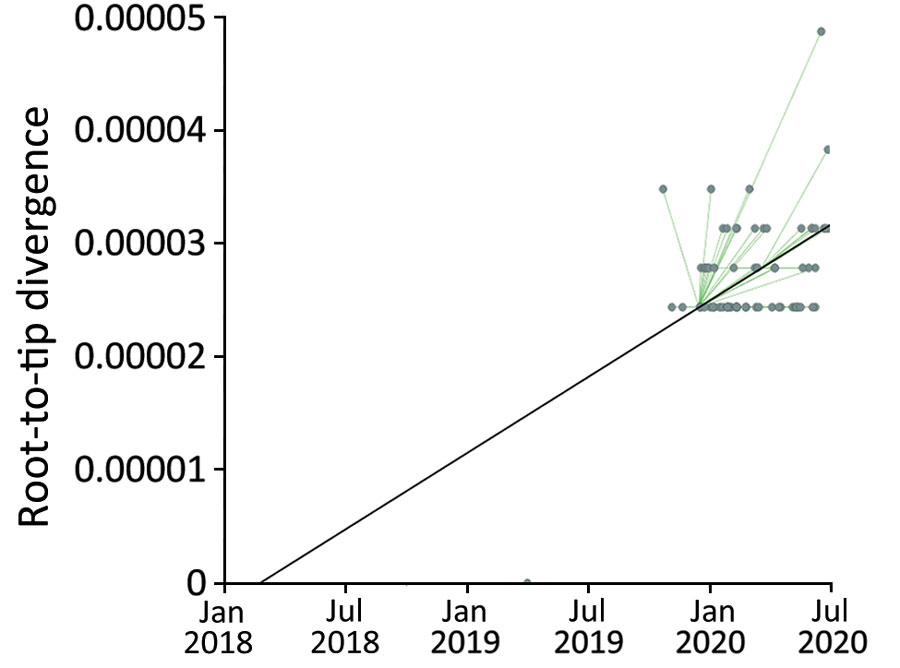Volume 29, Number 10—October 2023
Research
Candida auris Clinical Isolates Associated with Outbreak in Neonatal Unit of Tertiary Academic Hospital, South Africa
Figure 4

Figure 4. Root-to-tip regression analysis of 67 South African Candida auris outbreak isolates from the neonatal ward of a large metropolitan hospital in South Africa. Genetic distance is plotted against sampling time. Every data point represents a tip on the phylogeny. Black line indicates correlation coefficient for the regression. Green lines represent the evolutionary rate in substitutions/site/day.
1Members of GERMS-SA are listed at the end of this article.
Page created: August 31, 2023
Page updated: September 20, 2023
Page reviewed: September 20, 2023
The conclusions, findings, and opinions expressed by authors contributing to this journal do not necessarily reflect the official position of the U.S. Department of Health and Human Services, the Public Health Service, the Centers for Disease Control and Prevention, or the authors' affiliated institutions. Use of trade names is for identification only and does not imply endorsement by any of the groups named above.